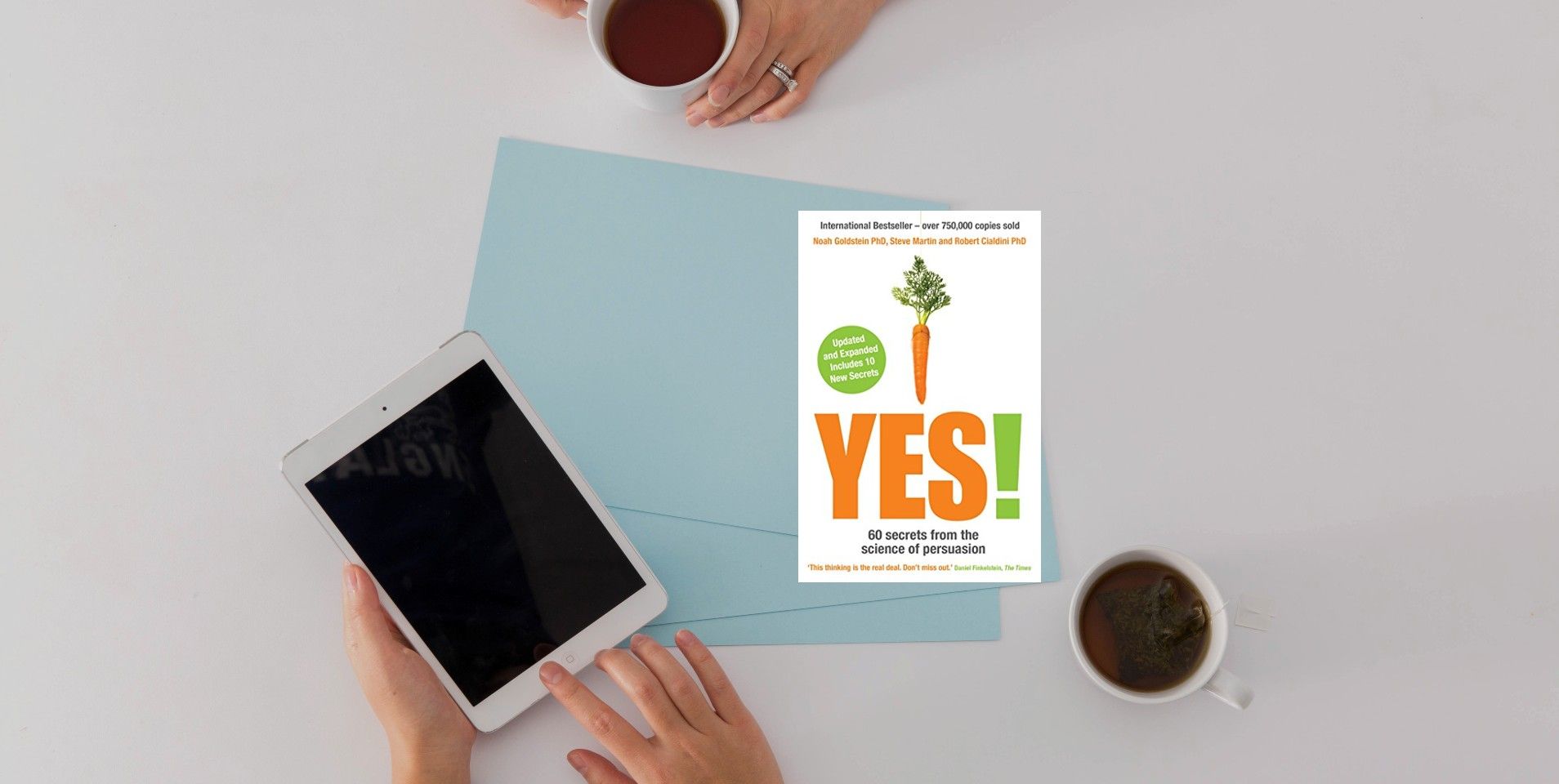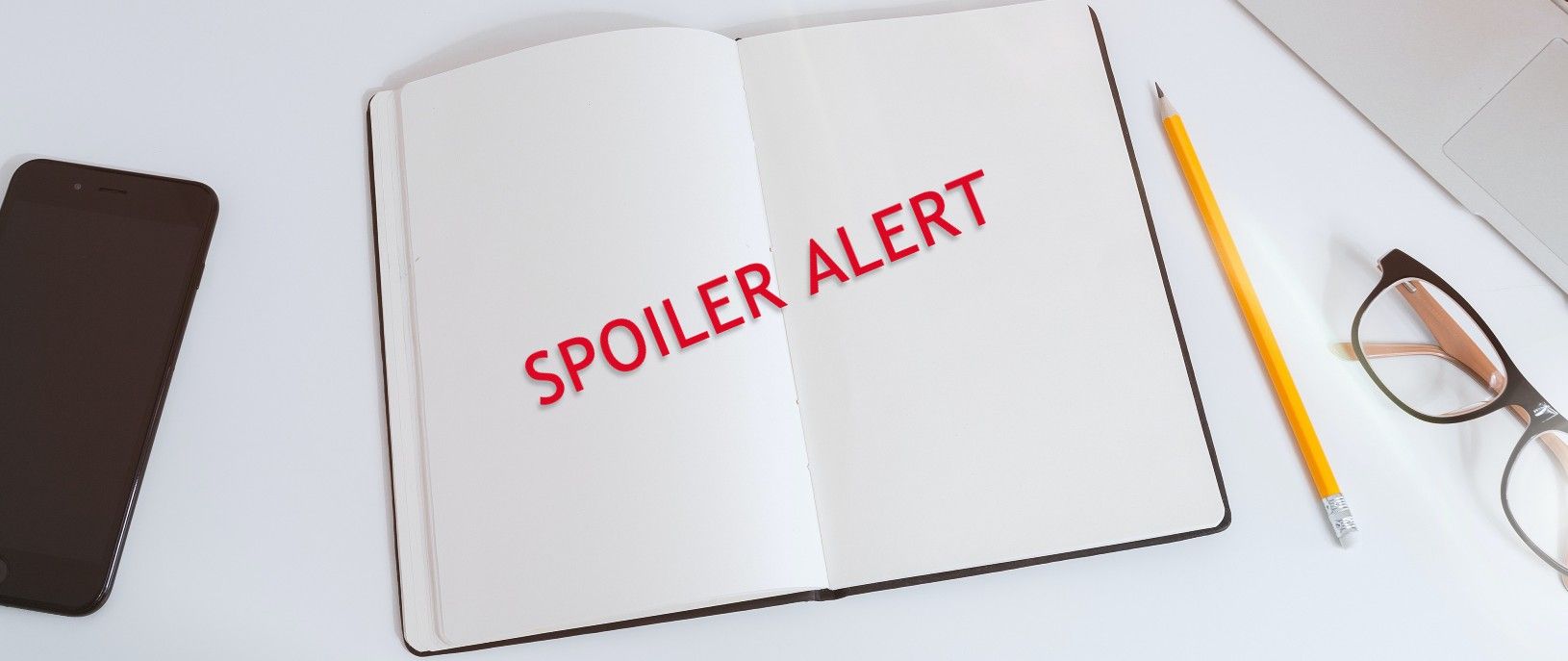Yes! 60 Secrets from the Science of Persuasion - Book Summary

by Noah Goldstein PhD, Steve Martin and Robert Cialdini PhD
“Brimming with insight.” –Daily Telegraph
“This thinking is the real deal. Don’t miss out.” – Daniel Finkelstein, The Times

Below are some of the ideas that I found interesting, I also added examples from the standard one to the more persuasive version:
- People would call more if they heard the second phrase after a commercial “Operators are waiting” -> “ If operators are busy, please call again”.
The power of social proof. - People are going to follow similar behaviour, and tend to like more the people who are similar to them.
- Do not show popular negative behaviours -> example: “most people drop the bin on the street, don’t do that!”
- More choices can make people want less!
- Adding the option to “do nothing” can make people want to do something and increases the likelihood to stick with it.
- Value your free product by telling the people the value. For example, if you are promoting an after-school free course, remind the people how expensive it is to go and pay for one.
- Focusing also on what they may lose- people will tend to be persuaded if they know they will lose 50$ than if they save 50$.
- The middle product quality can be the most requested - bypassing the “compromise choice”.
- Rank anything by familiar numbers - top 10, top 20 etc.
- Induce fear with your recommended product, for example: those who saw in a pamphlet card for thetans shot fear images of the danger of contracting tetanus were more likely to get the shot than others.
- When talking to CS if you ask/mention his name again and say that you will write a great review or tell his supervisor how helpful he was - the CS agent will put more effort into helping you.
- Personalised requests - handwriting notes - will make people more persuasive to complete your request.
- Candy tips - increased the chance for the customer to leave a tip.
Or waiters can get a better tip when they repeat back the customer's order. - Discount at the beginning of the negotiation can make the other party take the deal.
- Changing the taste - when telling a group of people that one wine they tasted is an award-winning top quality -the group who know this were more likely to say it tasted better than the standard one.
- Favors - when you give one - the recipient has a short memory about it. When You receive one the giver will consider the favour much bigger over time.
- Foot-in-the-door technique - if you start with a small request, you can get a yes for a bigger one later.
- Persuasive others by assigning them a good belief or label for example: “above-average citizen, a good person, a caring person…”, when teachers said to some of the students that they seem like the students who care about their handwriting, they actually put more effort into it.
- Making people answer the question can make them keep the word, for example: “please call if you cancel” vs -> “Will you please call if you have to cancel?”
- Increase the commitment by asking the people how they are planning to do it. For example- the people who answered “yes” to If they will go to vote question. Follow this by adding “ how are you planning to travel to the poll station on election day?”
- Mentioning small flows makes the company more trustworthy: “We’re #2, but we try harder. When you’re not #1, you have to”.
- People are more understanding if the computer made the mistake.
- The luxury stores can make you buy more when they apply the “retail rejection”- you want to buy more to show that you belong to the same group of people.
- Small requests can go by when they are accompanied by a reason.
- Making people think about one reason is better than asking them to think about ten.
“Between BMW and Mercedes, there are so many reasons to choose BMW. Can you name one? “ - Statements are better than questions on products. For example: “The pen for you” -> “The then for you?”.
- The first context will determine how you judge the second one.
Examples:
- If you have 2 products, if the first one has short info, and the second one is more detailed, people will like the second one, feeling that is more informative. If you take the same 2nd message and put it under a product with the info having more details, then people will say the 2nd message isn’t as informative.
- “A home improvement company was able to increase the sales of one of its top-of-the-range backyard hot tubs by over 500 % by (a) telling prospective customers that many buyers of the top-of-the-range model reported that having it was like adding an extra room to the house and then (b) asking them to consider how much it would cost to build another room on to the side of their house.” - People tend to stick to the program if they have a headstart in completing them.
For example: if you have a loyalty card, and each time you go to the supermarket and shop for over 10$ you get a stamp, at 10 stamps you get a prize. If you give to the customer a card with 12 stamps to complete but you fill in the first 2 stamps, they will be more compliant to finish it than if they get a blank one with 10. - Interesting names can be more persuasive, for example: “blue” vs “millenium blue”.
- The mirror - viewing ourselves in the mirror can make us better. For example: when kids were asked to go and pick 1 candy if there was a mirror the majority of children picked only 1 vs if there was no mirror in front of the bowl.
- Feelings and decisions - if a customer is sad will buy and pay more than neutrals.
- Ads and their location, people tend to look at the top-left and bottom-right of the screen
Note: Some pieces of information are left out of the book.
Get the full experience by reading it! ❤
